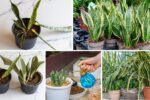Bananas (Musa spp.) are among the most widely cultivated and consumed fruits worldwide, prized for their sweetness, nutritional value, and versatility. While banana plants are known for their rapid growth and tropical adaptability, ensuring optimal fruit quality before harvest requires precise care, particularly in watering. Proper irrigation is essential for supporting flowering, fruit development, and ultimately, a healthy yield. Overwatering or under-watering during this critical stage can drastically affect fruit size, sweetness, and overall harvest quality.
Introduction to Banana Plant Cultivation

Banana plants are fast-growing, herbaceous perennials that thrive in tropical and subtropical regions. They require fertile, well-draining soil, adequate sunlight, and sufficient moisture for optimal growth. Banana cultivation is labor-intensive and involves careful attention to irrigation, especially during the flowering and fruiting stages. The period leading up to harvest is particularly crucial because water stress or excess can affect fruit texture, sugar content, and marketability.
Benefits of Proper Banana Irrigation:
- Improved Fruit Quality: Well-watered plants produce plump, sweet bananas.
- Reduced Stress: Adequate water prevents flower drop and fruit splitting.
- Enhanced Nutrient Uptake: Water facilitates the movement of nutrients from soil to plant tissues.
- Disease Prevention: Proper watering reduces susceptibility to fungal infections caused by water stress or excessive moisture.
Factors Influencing Watering Needs Before Harvest

Several factors determine how frequently and how much banana plants should be watered before harvest:
- Soil Type:
- Sandy soils drain quickly and require more frequent watering.
- Clay soils retain moisture and may require less frequent irrigation.
- Climate and Temperature:
- Hot, dry climates increase evaporation and water demand.
- Humid or cooler climates reduce water requirements.
- Plant Age and Size:
- Mature banana plants with established root systems can tolerate slight variations in water.
- Newly planted bananas or ratoon crops require consistent moisture.
- Stage of Fruit Development:
- Water requirements peak during flowering and fruit-filling stages.
- Pre-harvest water stress can reduce fruit size and sugar content.
- Irrigation Method:
- Drip irrigation provides precise water delivery to the root zone.
- Flood or furrow irrigation can be less efficient and risk waterlogging if not carefully managed.
Understanding the Banana Plant’s Water Requirement

Banana plants are highly sensitive to both drought and waterlogging. Adequate soil moisture is critical for:
- Flower Retention: Water stress during flowering can lead to premature flower drop.
- Fruit Filling: Consistent water supply ensures large, evenly developed bananas.
- Nutrient Transport: Water is essential for the translocation of minerals and sugars into developing fruits.
- Stress Reduction: Proper hydration minimizes plant stress and supports resistance to pests and diseases.
Typically, banana plants require 25–30 liters of water per plant per day during peak growth and fruit development under tropical conditions, but this varies with climate, soil, and irrigation method.
Signs Your Banana Plants Need Water

Recognizing water stress is essential for timely irrigation:
- Leaf Curling: Leaves curl downward when soil moisture is insufficient.
- Yellowing Leaf Edges: Browning or yellowing tips indicate water deficit.
- Wilting: Entire plants droop during periods of extreme dryness.
- Slow Fruit Development: Insufficient water reduces fruit size and delays maturation.
Signs of Overwatering
Excess water is equally harmful and can lead to:
- Waterlogged Soil: Reduces oxygen availability to roots.
- Root Rot: Fungal infections can develop in constantly wet soil.
- Yellowing Lower Leaves: Often a symptom of root suffocation.
- Fungal Diseases: Conditions like Panama disease thrive in overly wet environments.
Ensuring well-draining soil and monitoring soil moisture can prevent these problems.
The Ideal Watering Schedule Before Harvest
- Flowering Stage:
- During the emergence of the inflorescence, water moderately every 2–3 days.
- Avoid waterlogging, as excessive moisture can lead to fungal infections.
- Fruit Development Stage:
- Increase irrigation frequency to every 1–2 days depending on soil type and temperature.
- Deep watering is recommended to ensure the root zone is adequately hydrated.
- Late Pre-Harvest Stage:
- Reduce watering slightly 1–2 weeks before harvest to prevent fruit splitting.
- Maintain soil moisture at moderate levels rather than saturation.
- Irrigation Techniques:
- Drip Irrigation: Most effective for targeted root hydration, preventing water wastage.
- Mulching: Applying organic mulch reduces evaporation and maintains soil moisture.
- Manual Watering: Effective for small-scale plantations, ensuring water reaches the root zone.
Best Practices for Watering Banana Plants

- Check Soil Moisture Regularly: Use a moisture probe or simply test by hand to avoid over- or under-watering.
- Use Mulch: Organic mulch like straw or coconut husk helps retain moisture and regulate temperature.
- Water in the Morning: Early watering reduces evaporation and allows plants to absorb water efficiently.
- Avoid Water Accumulation Around Stems: Waterlogged base can cause stem rot.
- Adjust Watering by Climate: Increase in hot, dry conditions and reduce in rainy periods.
Benefits of Correct Watering Before Harvest
- Enhanced Fruit Quality: Properly watered bananas are larger, sweeter, and uniform in size.
- Reduced Stress and Fruit Drop: Minimizes flower and fruit abortion caused by water stress.
- Better Nutrient Uptake: Water ensures essential nutrients reach the fruits, enhancing flavor and texture.
- Disease Prevention: Healthy soil moisture reduces fungal and bacterial infections.
Common Mistakes in Banana Watering Before Harvest
- Overwatering: Leads to root rot, fungal growth, and reduced fruit quality.
- Underwatering: Causes small, underdeveloped fruits and potential flower drop.
- Ignoring Soil Type: Not adjusting irrigation frequency for soil texture leads to water stress or waterlogging.
- Failing to Adjust for Climate: Uniform watering schedules without considering rainfall or temperature changes can harm plants.
- Improper Irrigation Method: Flood irrigation without proper drainage increases disease risk.
Conclusion
Banana plants are highly sensitive to water stress, particularly during flowering and fruit development. A well-managed watering routine ensures optimal fruit size, sweetness, and overall plant health. By carefully monitoring soil moisture, adjusting irrigation based on plant stage, and using proper techniques such as drip irrigation and mulching, growers can achieve a successful and high-quality harvest.
In summary: water moderately during flowering, increase irrigation during fruit development, and slightly reduce watering just before harvest. Combine this with well-draining soil, adequate sunlight, and nutrient management to produce plump, sweet bananas that meet market and culinary standards.
Proper watering is not merely a routine; it is a strategic practice that safeguards fruit quality, enhances plant resilience, and maximizes yield. Following these guidelines ensures banana plants remain vigorous, healthy, and productive right up to the point of harvest.




Leave A Comment